John Ferry Lecture
The John Ferry Lecture is an annual public lecture which honours the memory and work of UNE's Dr John Ferry (1949-2004).
After a successful career in primary education, John Ferry was appointed to the Armidale College of Advanced Education in 1986 and, following the amalgamation of the CAE with the University of New England, he joined the UNE School of Classics, History and Religion (now the School of Humanities, Arts and Social Sciences) in 1995. Throughout his working life, Dr Ferry was a committed and exceptional historian in his chosen areas of local, family and applied history. He created and taught, among others, units on heritage conservation and architectural history in which he drew upon his own experience as a published local and public historian. He wrote books for use in schools, produced an impressive raft of heritage conservation studies and reports, and was in constant demand to assist local councils and community groups to increase their awareness and use of local heritage assets. His prize winning book, Colonial Armidale, is regarded by many leading Australian historians as the best and most innovative local
history written in Australia.
The mixing of history and heritage, of people and the built environment, of analysis and description were key elements of Dr Ferry's scholarship and practice as an historian. He also believed in the important contributions made by family and community members and the need to ensure their ownership of their history and heritage. He brought these concerns and experience to his involvement with the Heritage Futures Research Centre and it is fitting that the Centre's annual public lecture should be given in his memory.
Past Speakers
2016: Jody Steele (Port Arthur Historic Site Management Authority’s Heritage Programs Manager), 'Bigamy, buggery, bestiality and bastardry - you can't say that!': Storytelling Australia's history (23 Sept 2016)
2014: Hilda Keen (Visiting Professor University of Greenwich), Families, Places and Pasts: Whose history? And who decides?’ (14 Nov 2014)
2013: Anne McConnell (Consultant - Cultural Heritage Management, Archaeology & Quaternary Geoscience), An Exploration of Landscapes as Heritage (with a focus on southern Australian examples), (7 November 2013)
2012: Dr Luke Godwin & Scott L'Oste-Brown (Cultural Heritage Systems & Strategies P/L), Water, Water Everywhere: attempts at drought-proofing properties using surface water infrastructure in Central Western Queensland in the early-1880s (Presented by Dr Godwin, 1 May 2012)
2011: Professor Iain Davidson (University of New England), Two tales of a City: history and heritage of Armidale by John Ferry and Heather Burke (20 April 2011)
2010: Dr Neville Ritchie , Department of Conservation, Waikato Conservancy, 'Frozen Heritage: Antarctic History, Archaeology and Conservation Work' (28 September 2010).
2008: Dr Denis Byrne, Department of Environment and Climate Change, 'Divine Heritage: the Place of the Supernatural in the Popular Valuation and Conservation of Thailand's Religious Heritage' (17 April 2008)
2007: Mike Smith (National Museum of Australia and the Australian National University), 'People and Place on a Desert Frontier: Aboriginal History in Western Central Australia, 1850-1980' (25 October 2007)
2006: Professor Graeme Davison (King's College, London), 'Heritage in Retreat?' (4 April 2006)
2005: Sharon Sullivan
2013
Anne McConnell, Consultant - Cultural Heritage Management, Archaeology & Quaternary Geoscience, 'An Exploration of Landscapes as Heritage (with a focus on southern Australian examples)'
ABSTRACT: This paper looks at a variety of heritage landscape types: convict (Sarah Island), mineral field, orcharding, rural colonial (Bagdad Valley), exploration (Antarctica - Mawsons Expedition) to explore the sorts of heritage landscapes that can be recognised, and to also look at the issues involved in their recognition and management (touching on setting as well).
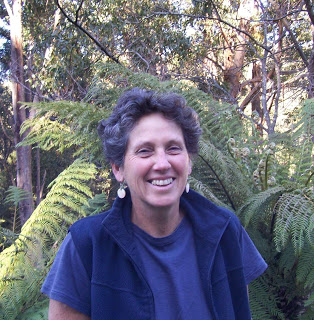 Anne McConnell is a cultural heritage practitioner with over 30 years experience working in cultural heritage management, primarily in Australia. Anne's qualifications in archaeology, Quaternary geology and anthropology were obtained from the University of Western Australia (1972-74) and the Australian National University (1975-79). Anne worked initially with the Victoria Archaeological Survey, then the Tasmanian Forestry Commission. For the last 18 years Anne has worked as a Hobart based heritage consultant, working in both Aboriginal and historical heritage. Anne's background and work experience have given her a strong interest in spatial approaches to archaeology, heritage landscapes, and generally the importance of context to place, approaches which in turn strongly inform her practice in heritage and archaeology. Anne also has a strong interest in multidisciplinary approaches to research and heritage management.
Anne McConnell is a cultural heritage practitioner with over 30 years experience working in cultural heritage management, primarily in Australia. Anne's qualifications in archaeology, Quaternary geology and anthropology were obtained from the University of Western Australia (1972-74) and the Australian National University (1975-79). Anne worked initially with the Victoria Archaeological Survey, then the Tasmanian Forestry Commission. For the last 18 years Anne has worked as a Hobart based heritage consultant, working in both Aboriginal and historical heritage. Anne's background and work experience have given her a strong interest in spatial approaches to archaeology, heritage landscapes, and generally the importance of context to place, approaches which in turn strongly inform her practice in heritage and archaeology. Anne also has a strong interest in multidisciplinary approaches to research and heritage management.
2012
Dr Luke Godwin & Scott L'Oste-Brown, Cultural Heritage Systems & Strategies P/L, 'Water, Water Everywhere: attempts at drought-proofing properties using surface water infrastructure in Central Western Queensland in the early-1880s' (Presented by Luke Godwin)
ABSTRACT: There is a long and continuing history in Australia of private enterprise and governments attempting to 'drought-proof' businesses and communities. In this paper we explore the strategies employed for this purpose on the massive Wellshot sheep station, jewel in the crown of the Australian wool industry, in central western Queensland in the late 19th century. We describe some of the technology so used and its archaeological footprint. Questions reviewed include the purpose and operation of the water management facility, as well as when and who constructed it. We consider the overall efficacy of this and subsequent technologies in sustaining the huge sheep flocks de-pastured on this property during this period. We demonstrate that the highest rates of stocking on the property were achieved during the period when surface water, rather than ground water, was harvested. We then turn our attention to the broader implications of this success, noting that the use of technology like this on Wellshot and throughout the region resulted in massive profits being made by the pastoralists during the last few decades of the nineteenth century. These pastoralists deployed these financial resources for larger economic and industrial purposes, which in turn triggered unexpected responses that have had political ramifications through to the present day.
Luke Godwin has thirty years experience in cultural heritage management both as a private consultant and in government. He has a detailed working knowledge of government processes and legislative requirements, as well as best practice in the field of cultural heritage management skills and expertise regularly called on by a wide range of clients.
Luke's skills and abilities in project design and management are widely recognised and he has taken a leading role in establishing and managing many cultural heritage projects associated with large-scale developments in Queensland and NSW.He regularly publishes in peer-reviewed journals on technical and policy issues in cultural heritage management, archaeology and Aboriginal history. Luke holds a PhD from the University of New England and is currently Associate Professor (Adjunct), School of Arts and Social Sciences, James Cook University. In the 1980s he was involved in a number of heritage projects in the New England region including research into Uralla's historic McCrossin's Flourmill.
2011
Professor Iain Davidson, University of New England, 'Two tales of a City: history and heritage of Armidale by John Ferry and Heather Burke'
ABSTRACT: In 1999, John Ferry published a book, Colonial Armidale , based on his PhD thesis. Heather Burke published her study of Armidale, Meaning and Ideology in Historical Archaeology, in the same year based on some of the same materials. The two could hardly be more different as approaches to history and heritage. In this talk I will discuss the two books and make some points about the relations between history and heritage.
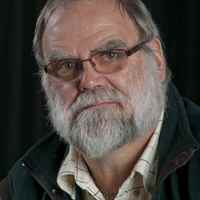 Iain Davidson is Emeritus Professor of Archaeology in the School of Humanities, Arts and Social Sciences at the University of New England and holds honorary positions at Flinders University, the University of Queensland and Harvard University. He worked at the University of New England for 34 years, where he helped start the Department of Prehistory and Archaeology. Iain was awarded a Personal Chair in 1997 which he held until retirement in 2008.
Iain Davidson is Emeritus Professor of Archaeology in the School of Humanities, Arts and Social Sciences at the University of New England and holds honorary positions at Flinders University, the University of Queensland and Harvard University. He worked at the University of New England for 34 years, where he helped start the Department of Prehistory and Archaeology. Iain was awarded a Personal Chair in 1997 which he held until retirement in 2008.
He held the Visiting Chair of Australian Studies at Harvard University in 2008-9, and was awarded the Rhys Jones Medal of the Australian Archaeological Association 2010.
2010
Dr Neville Ritchie, Department of Conservation, Waikato Conservancy, 'Frozen Heritage: Antarctic History, Archaeology and Conservation Work'
ABSTRACT: Dr Neville Ritchie has been involved in archaeological and conservation work in Antarctica since 1986. He has made seven trips, totalling eight months, to the Ross Dependency, the New Zealand-administered part of Antarctica, to survey and work on the heritage sites associated with the Scott and Shackleton polar expeditions in the first decades of twentieth century. Dr Ritchie's presentation will outline the history of polar exploration, the surviving heritage sites of the so called 'Heroic Era', and the major and on-going archaeological and conservation project that is currently underway under the auspices of the Antarctic Heritage Trust.
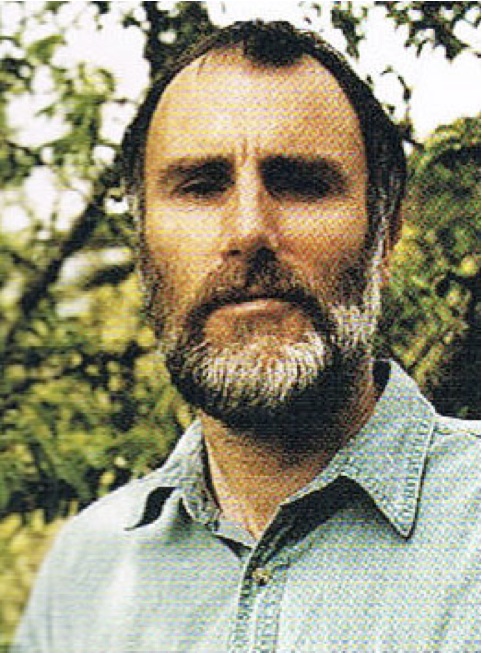 Dr Neville Ritchie, a University of Otago graduate has been involved in archaeology since 1968 when he took part in excavations as a school boy. In 1977 he was appointed project archaeologist on the Clutha Power Project, a position he held for 10 years until the completion of the project in 1987. For the past two decades he has been employed as Regional Archaeologist (Waikato) by the Department of Conservation in New Zealand. His specialist research interests include the archaeology and history of the overseas Chinese in NZ; mining and industrial archaeology, archaeology and history associated with the Waikato campaign (1863-64) of the NZ Wars; and, the archaeology and conservation of the sites associated with the Scott and Shackleton polar expeditions in Antarctica. He was President of the Australasian Society for Historical Archaeology from 2001 to 2006 and has published widely on these and many other subjects.
Dr Neville Ritchie, a University of Otago graduate has been involved in archaeology since 1968 when he took part in excavations as a school boy. In 1977 he was appointed project archaeologist on the Clutha Power Project, a position he held for 10 years until the completion of the project in 1987. For the past two decades he has been employed as Regional Archaeologist (Waikato) by the Department of Conservation in New Zealand. His specialist research interests include the archaeology and history of the overseas Chinese in NZ; mining and industrial archaeology, archaeology and history associated with the Waikato campaign (1863-64) of the NZ Wars; and, the archaeology and conservation of the sites associated with the Scott and Shackleton polar expeditions in Antarctica. He was President of the Australasian Society for Historical Archaeology from 2001 to 2006 and has published widely on these and many other subjects.
2008
Dr Denis Byrne (Department of Environment and Climate Change), 'Divine Heritage: the Place of the Supernatural in the Popular Valuation and Conservation of Thailand's Religious Heritage'
ABSTRACT: Popular religion, with its emphasis on the magic-supernatural, is a key factor in the way that archaeological objects and sites are contextualised within contemporary local culture in Thailand. The failure of most heritage practitioners to acknowledge this reality disenfranchises the majority of the population from having a meaningful voice in heritage conservation and is a major obstacle to conservation policies having real traction at a local level. An explanation for this situation is sought in the history of Asia's modernising program and the campaigns against 'superstition' mounted by the region's centralised nation states from the second half of the 19th century. Modern Asian states have attempted to operationalise a Western style secular-sacred binary. In Thailand this leads to Buddhist temples being assigned to the sphere of the sacred while other old or ancient structures are assigned to the fields of archaeology and art history. At an official level there is a presumption that the supernatural and rationalism are mutually incompatible. In the unruly world of popular practice, however, people happily deploy the discourses of archaeology, antiquarianism and the magical virtually simultaneously. By taking upon itself the responsibility of policing the meaning of objects and places, archaeological heritage practice risks becoming a stranger to the reality of local understandings of 'place'. Alternatively, by opening its eyes to the prevalence of the magical supernatural in popular practice, it gains access to a materiality which is more complex, more alive, and ultimately more interesting.
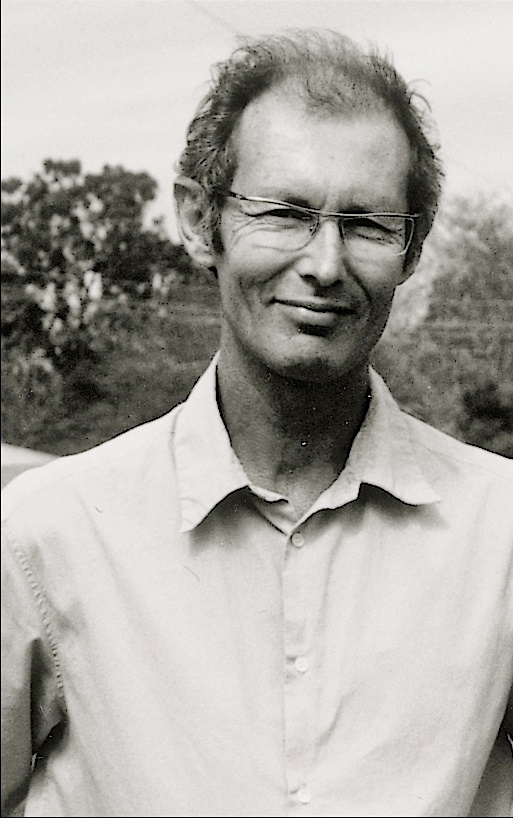 Denis Byrne leads the research program in culture and heritage at the Department of Environment and Climate Change NSW. He is also adjunct professor at the TransForming Cultures Centre, University of Technology Sydney. His research interests and publications cover the areas of intangible heritage, Aboriginal post-contact archaeology, the heritage of racial segregation in NSW, and the history heritage discourse in Australia. Following his PhD research at the Australian National University he has maintained an interest in the history and politics of heritage conservation in Southeast Asia. Current research includes a study of cultural diversity as a factor in the perception and use of parklands in southwest Sydney. His 2007 book, Surface Collection, consists of a set of archaeological travel essays set in Southeast Asia.
Denis Byrne leads the research program in culture and heritage at the Department of Environment and Climate Change NSW. He is also adjunct professor at the TransForming Cultures Centre, University of Technology Sydney. His research interests and publications cover the areas of intangible heritage, Aboriginal post-contact archaeology, the heritage of racial segregation in NSW, and the history heritage discourse in Australia. Following his PhD research at the Australian National University he has maintained an interest in the history and politics of heritage conservation in Southeast Asia. Current research includes a study of cultural diversity as a factor in the perception and use of parklands in southwest Sydney. His 2007 book, Surface Collection, consists of a set of archaeological travel essays set in Southeast Asia.
2007
Mike Smith (National Museum of Australia and the Australian National University), 'People and Place on a Desert Frontier: Aboriginal History in Western Central Australia, 1850-1980'
ABSTRACT: Heritage is a difficult concept, an unstable mix of history, community sentiment, identity and politics. A strong, nuanced, appreciation of local history can ground a community. Lose this and heritage easily slips sideways into nostalgia, sentimental nationalism, or a loose antiquarianism. But the nexus between place and identity is a perennial and very human concern. John Ferry appreciated this. His wonderful book 'Colonial Armidale' is a masterpiece, resonating with good humour and scholarship. In this lecture, I draw on my more modest book 'Peopling the Cleland Hills' to explore another colonial situation, another set of historically shifting relationships between people and place. Western Central Australia - where the long valleys of the McDonnell Ranges open out into sand hill and spinifex country - is one of those rare regions where documentary records provide a detailed picture of the dynamics of the desert frontier. The journals of explorers, police and government surveyors, as well as anthropological records and genealogies, allow us to follow the history of individual Kukatja families, to watch as historical processes on this frontier play out over a century, as desert people migrated into pastoral stations and ration depots on the frontier, and the colonial authorities attempted to stem this flow of people. My history - like that of John Ferry - is anchored deeply in place. My aim in writing 'Peopling the Cleland Hills' was to watch historical events play across the landscape, following the fortunes of Aboriginal people associated with the area on the one hand, and on the other exploring the broader historical forces shaping and re-shaping its cultural and natural landscapes.
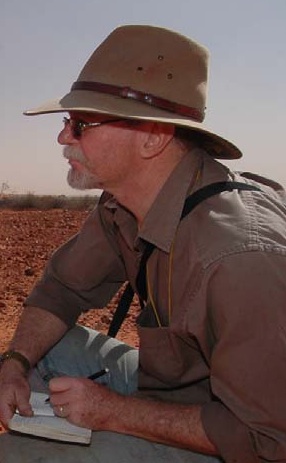 Dr Mike Smith, an archaeologist, is a Senior Research Fellow at the Centre for Historical Research, National Museum of Australia, and Adjunct Professor, Fenner School of Environment & Society, Australian National University. In 1988, he was the first student to gain a PhD in prehistoric archaeology at UNE. He is also a Fellow of the Australian Academy of the Humanities and of the Society of Antiquaries (London). In 2006 the Australian Archaeological Association awarded Mike the Rhys Jones Medal for Outstanding Contribution to Australian Archaeology. 'Peopling' the Cleland Hills: Aboriginal history in western Central Australia, 1850–1980, was published by Aboriginal History Monographs in 2005.
Dr Mike Smith, an archaeologist, is a Senior Research Fellow at the Centre for Historical Research, National Museum of Australia, and Adjunct Professor, Fenner School of Environment & Society, Australian National University. In 1988, he was the first student to gain a PhD in prehistoric archaeology at UNE. He is also a Fellow of the Australian Academy of the Humanities and of the Society of Antiquaries (London). In 2006 the Australian Archaeological Association awarded Mike the Rhys Jones Medal for Outstanding Contribution to Australian Archaeology. 'Peopling' the Cleland Hills: Aboriginal history in western Central Australia, 1850–1980, was published by Aboriginal History Monographs in 2005.
2006
Professor Graeme Davison (King's College, London), 'Heritage in Retreat?'
ABSTRACT: The 1970s and 80s were a golden era for the built heritage in Australia. The creation of the Australian Heritage Commission, the passage of state legislation to protect historic sites and buildings and the growth of the heritage profession were outward signs of its prosperity. Since the 1990s, however, the heritage movement has entered more troubled waters. The peak heritage organisations, such as the National Trust, have lost membership and influence, while both state and federal governments, bowing to neo-liberal economic doctrines, have become more reluctant to use coercive state power to protect the heritage. Yet, whether it is mountain cattlemen protesting their exclusion from alpine national parks, or suburban residents railing against 'inappropriate development', 'heritage' remains a popular ideal.
The Australian Government's new Heritage Council, with its proposed elite register of national heritage sites, and the Productivity's Commission's recent report on the costs and benefits of heritage are two recent indications of the shifting grounds of heritage debate in Australia. What do they presage for the future of the built environment in Australia? Is heritage in retreat or just adapting to new circumstances?
Graeme Davison is a Sir John Monash Distinguished Professor at Monash University. He recently retired from the School of Historical Studies and is now Director of the Monash University Centre at King's College London. He has published widely in Australian History where his publications include The Rise and Fall of Marvellous Melbourne (1978, revised edition 2004), The Unforgiving Minute: How Australia Learned to Tell the Time (1994) and Car Wars: How the Car Won Our Hearts and Conquered our Cities (2004) which was awarded the Nettie Palmer Prize for non-fiction in the Victorian Premier's Literary Awards. He has been prominent for many years as a teacher, advisor and commentator on heritage, museums, archives and other aspects of public history. He initiate d the Monash Master's program in Public History and was the founding director of the Monash Institute for Public History. His books A Heritage Handbook (coedited, 1991) and The Use and Abuse of Australian History (2000) draw upon his experience as a former chair of the Heritage Council of Victoria, councillor of the National Trust and advisor to the Commonwealth on World Heritage. He has been a member of the advisory council of the National Archives of Australia and an historical advisor to the National Museum of Australia. He recently co-edited Yesterday's Tomorrow's: The Powerhouse Museum and its precursors (2005).

